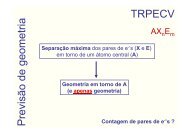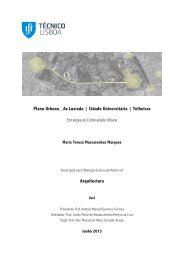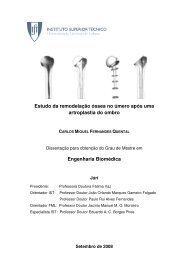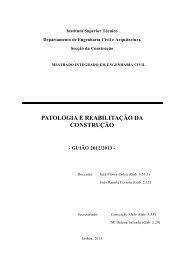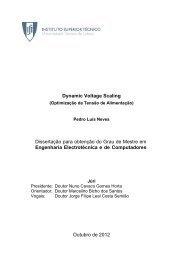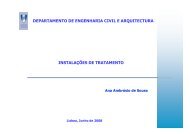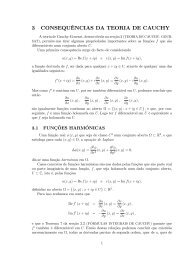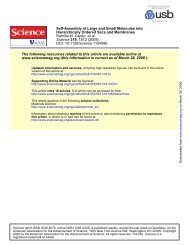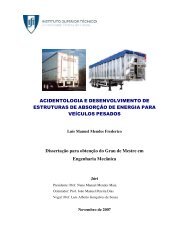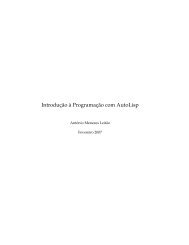dissertacao.pdf
dissertacao.pdf
dissertacao.pdf
You also want an ePaper? Increase the reach of your titles
YUMPU automatically turns print PDFs into web optimized ePapers that Google loves.
The consequence of this theorem is that for each test we apply to verify N’s<br />
primality, the probability that the test is wrong is less than 1<br />
2 . This means that,<br />
if we apply k tests with different random bases, and N passes all the tests, then<br />
there is a chance of less than 1<br />
2 k that N is composite.<br />
2.1.3 Miller-Rabin Primality Test<br />
The primality test presented in this section represents an evolution of FPT as<br />
for it there is no equivalent for the Carmichael Numbers, that is, there is no<br />
composite numbers which will pass the test for every different base. It is also<br />
more reliable than the Solovay-Strassen test as we will see. Again there is some<br />
composite numbers which fool the test. These are called the strong pseudoprimes<br />
but these numbers are, as we will see, slightly more understandable. The test<br />
is based on the following theorem, due to Miller:<br />
Theorem 12. Given an odd prime N, written as N = 1 + 2 s d, where d is odd,<br />
then the sequence:<br />
ends with 1. If<br />
a d , a 2d , a 4d , ..., a 2s−1 d , a 2 s d<br />
a d ≇ 1 (mod N)<br />
then the value preceding the first appearance of 1 is N − 1.<br />
(mod N) (32)<br />
This condition, unfortunately, is also verified by some composite numbers,<br />
for some base a.<br />
Definition 16. A composite number N which satisfies the conditions described<br />
by the theorem above, for an integer a, is said to be a strong pseudoprime<br />
to the base a. If a number is either prime or strong pseudoprime, we call it<br />
probably prime.<br />
24



